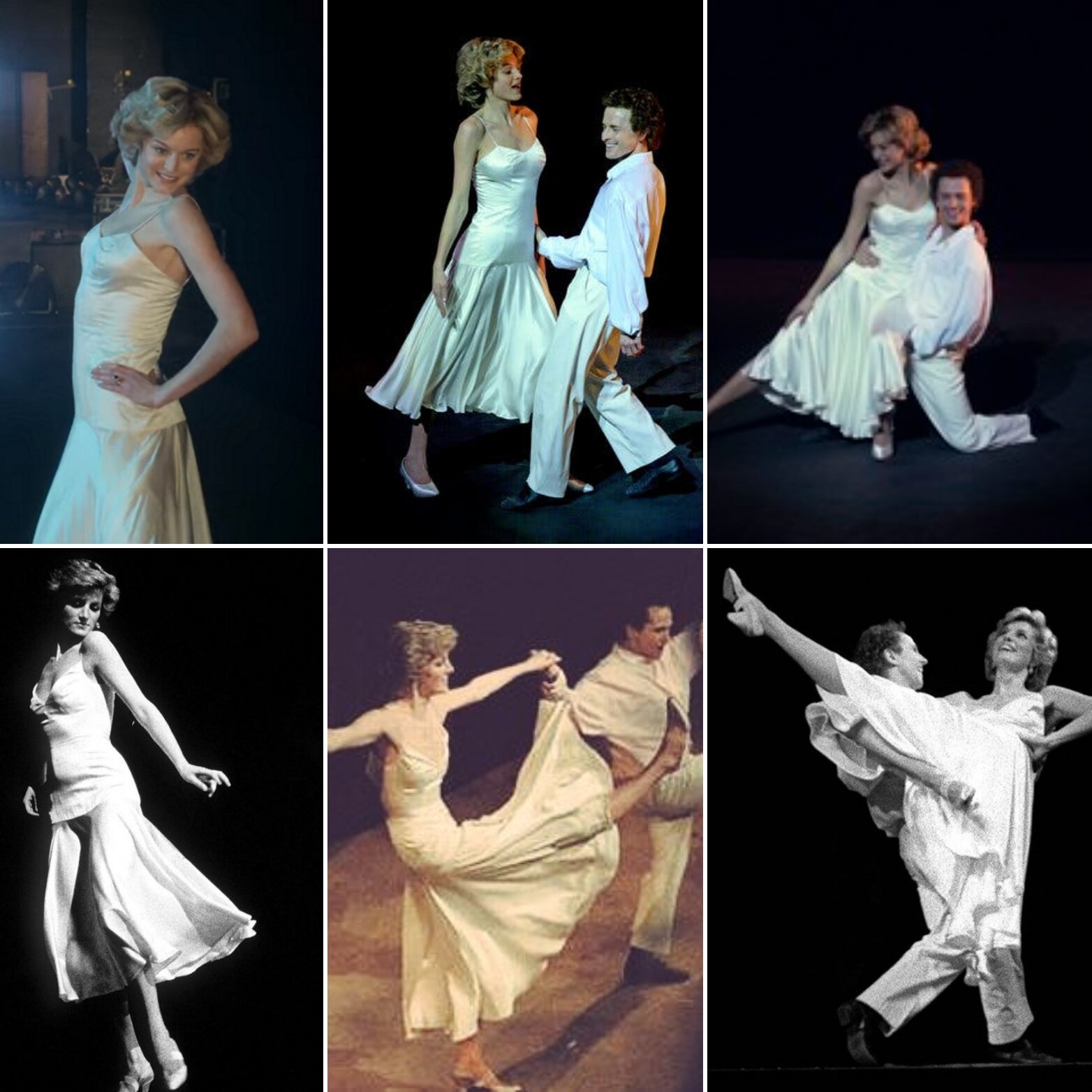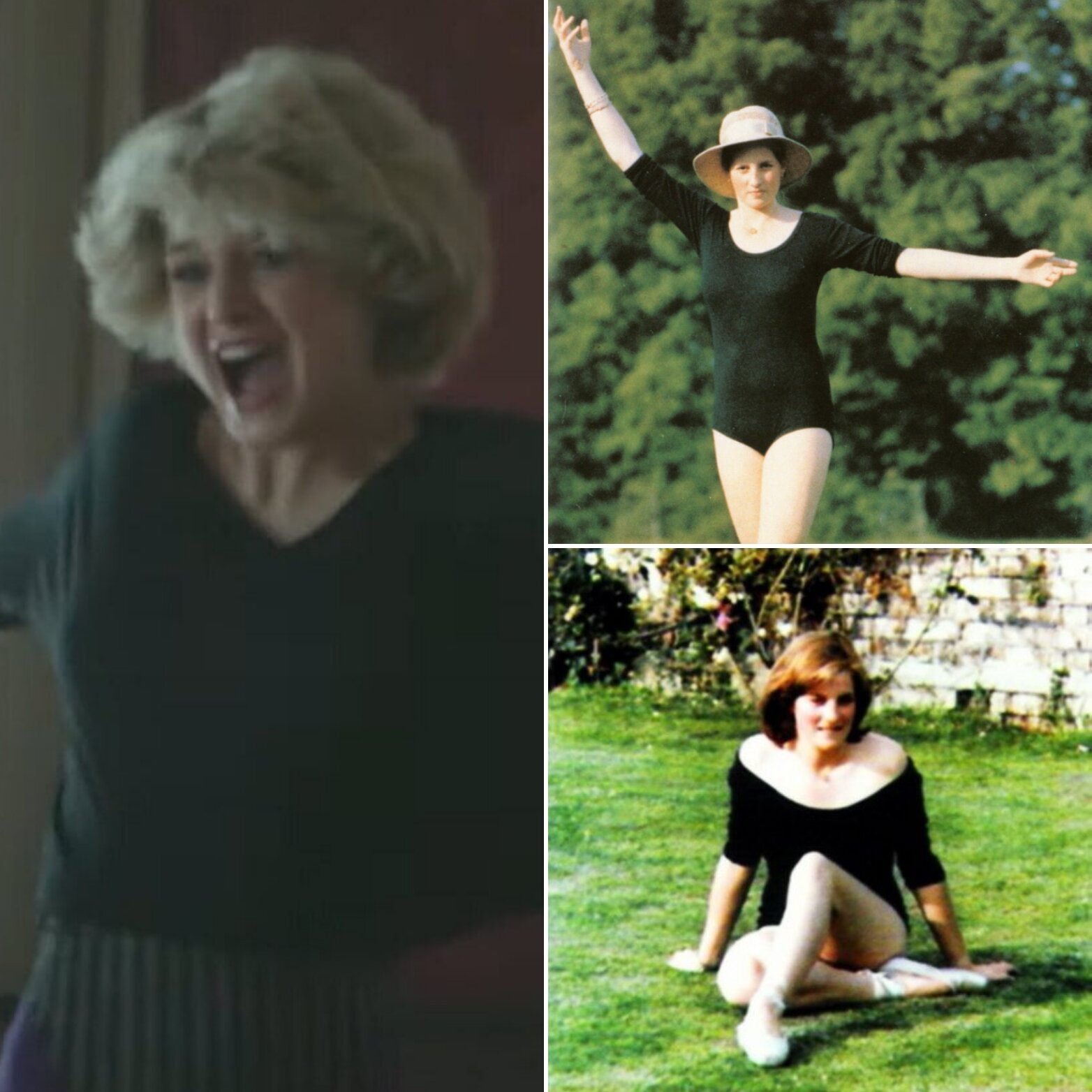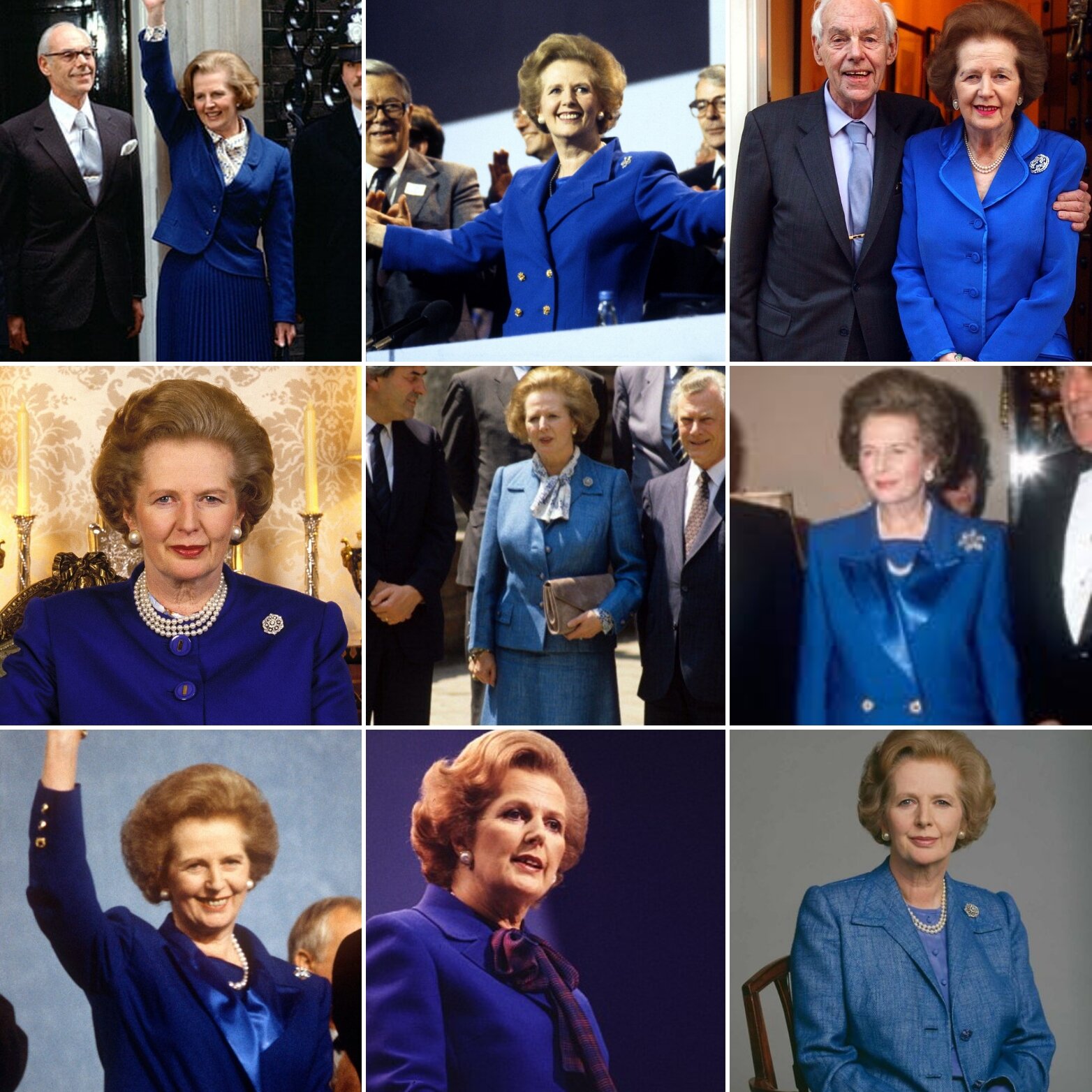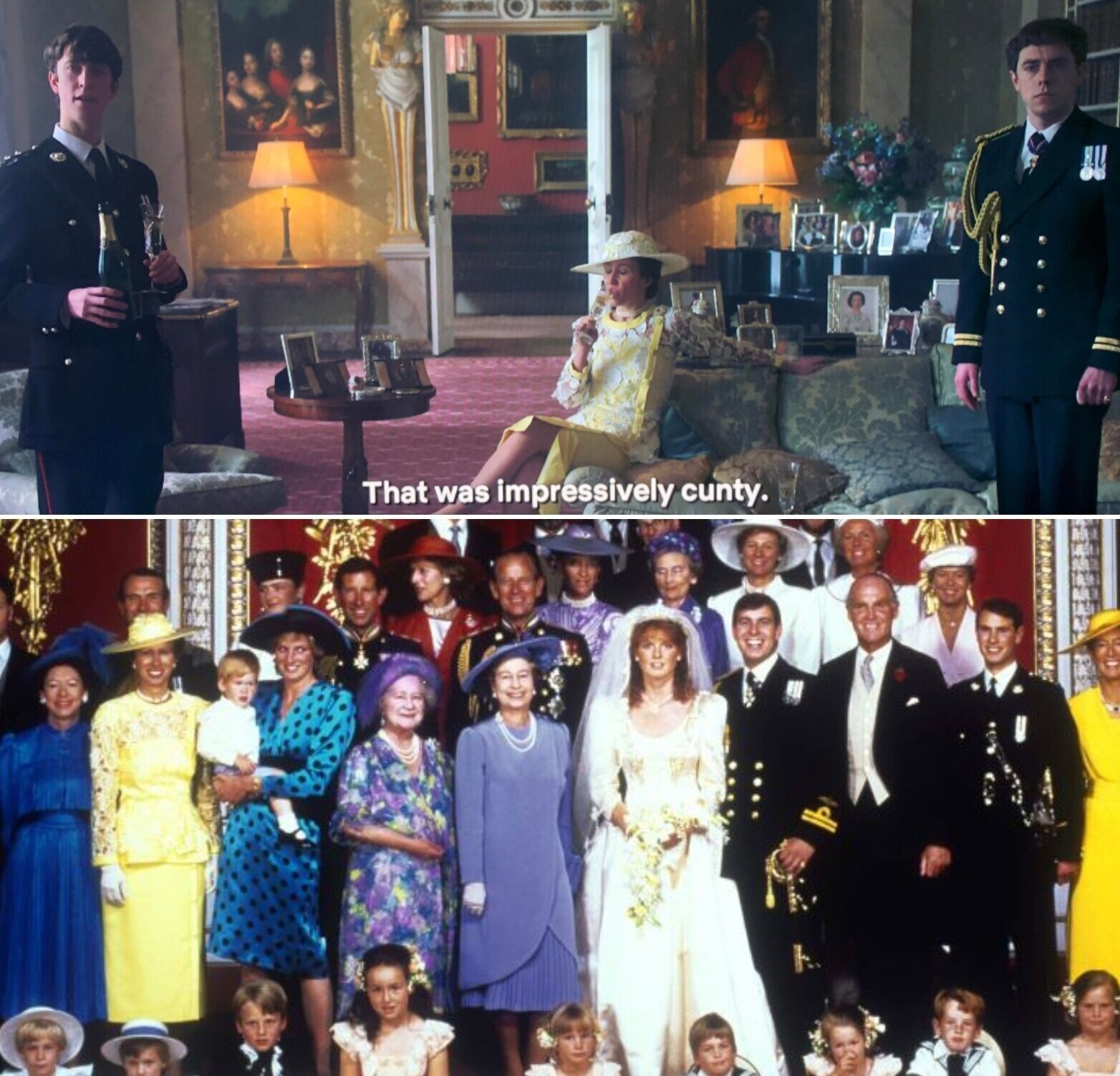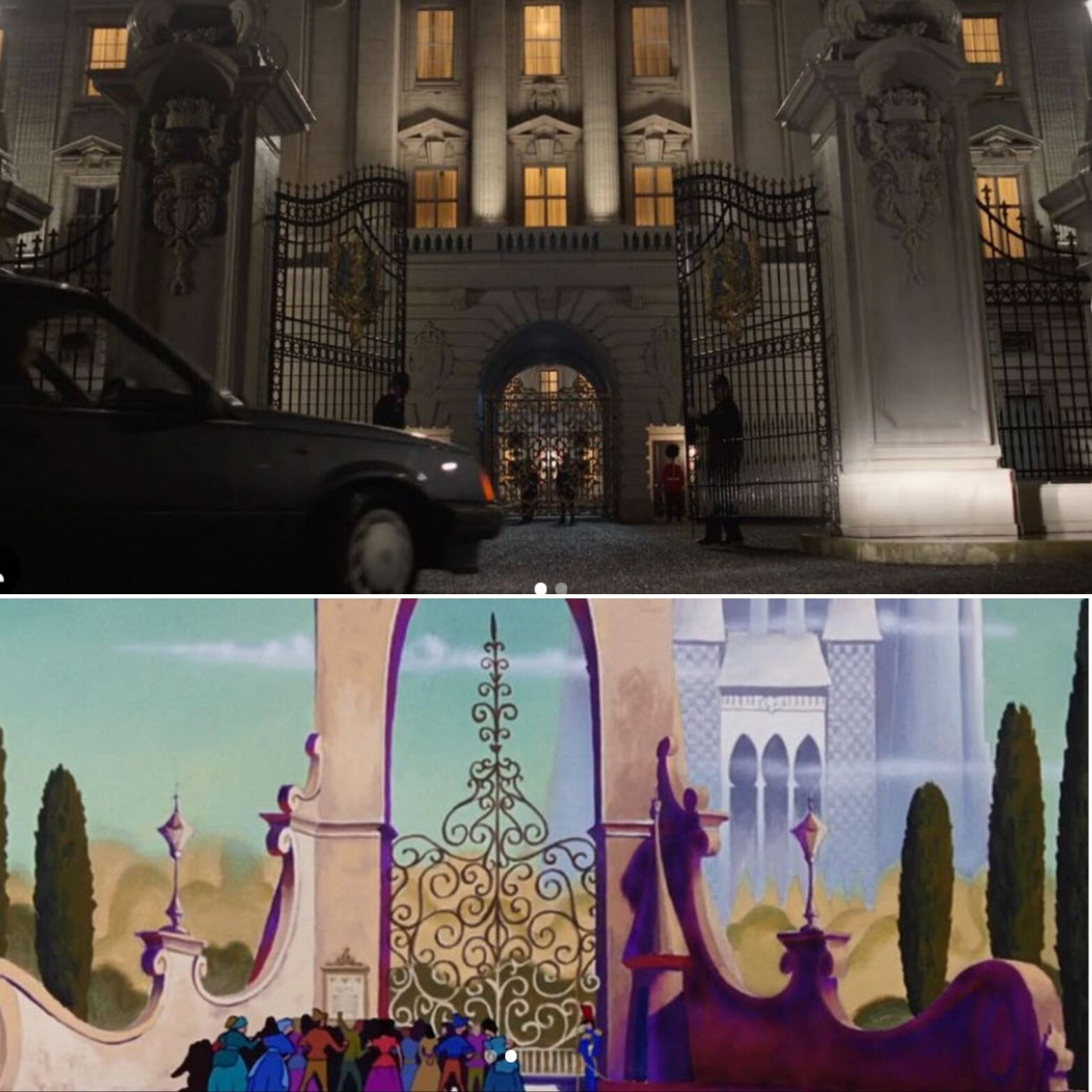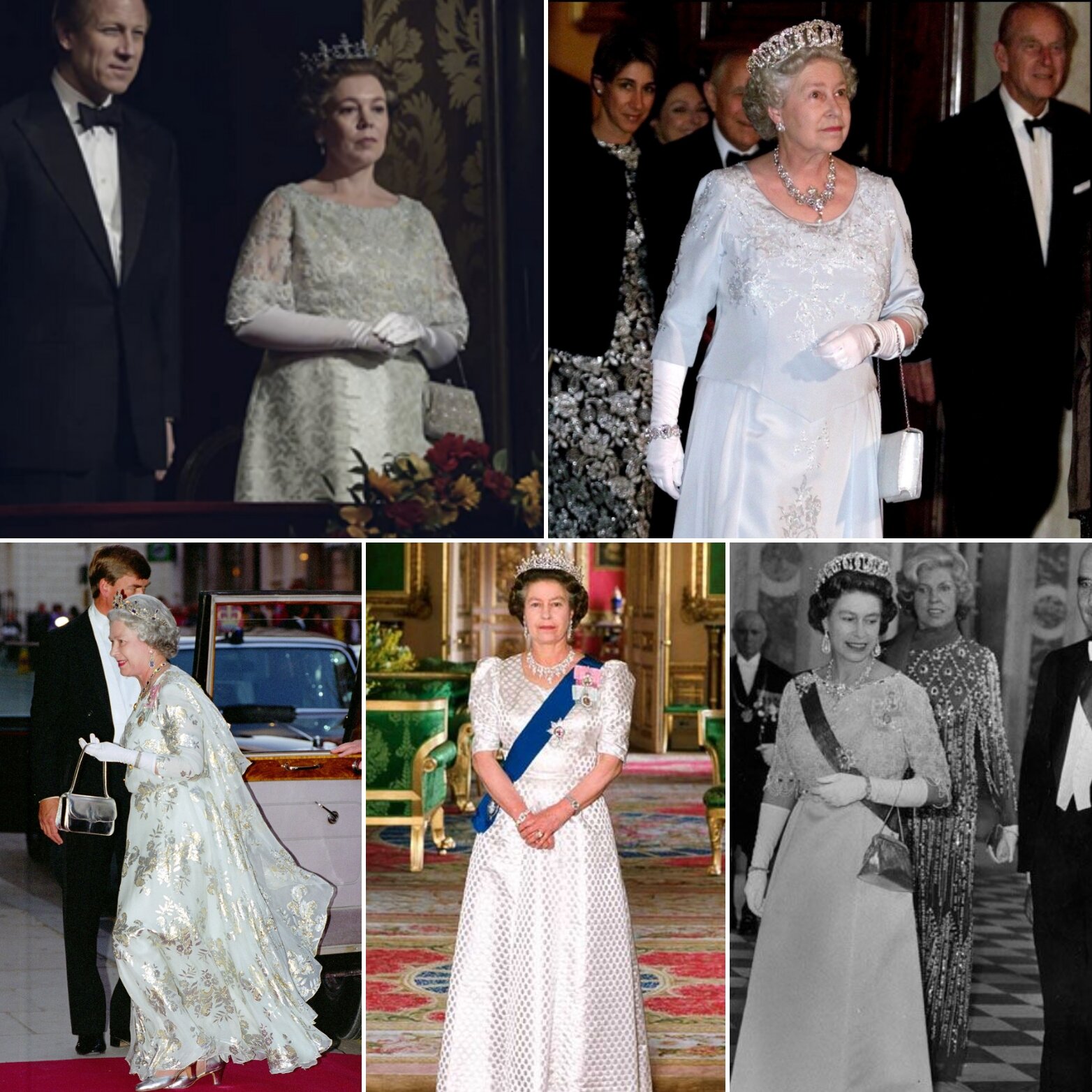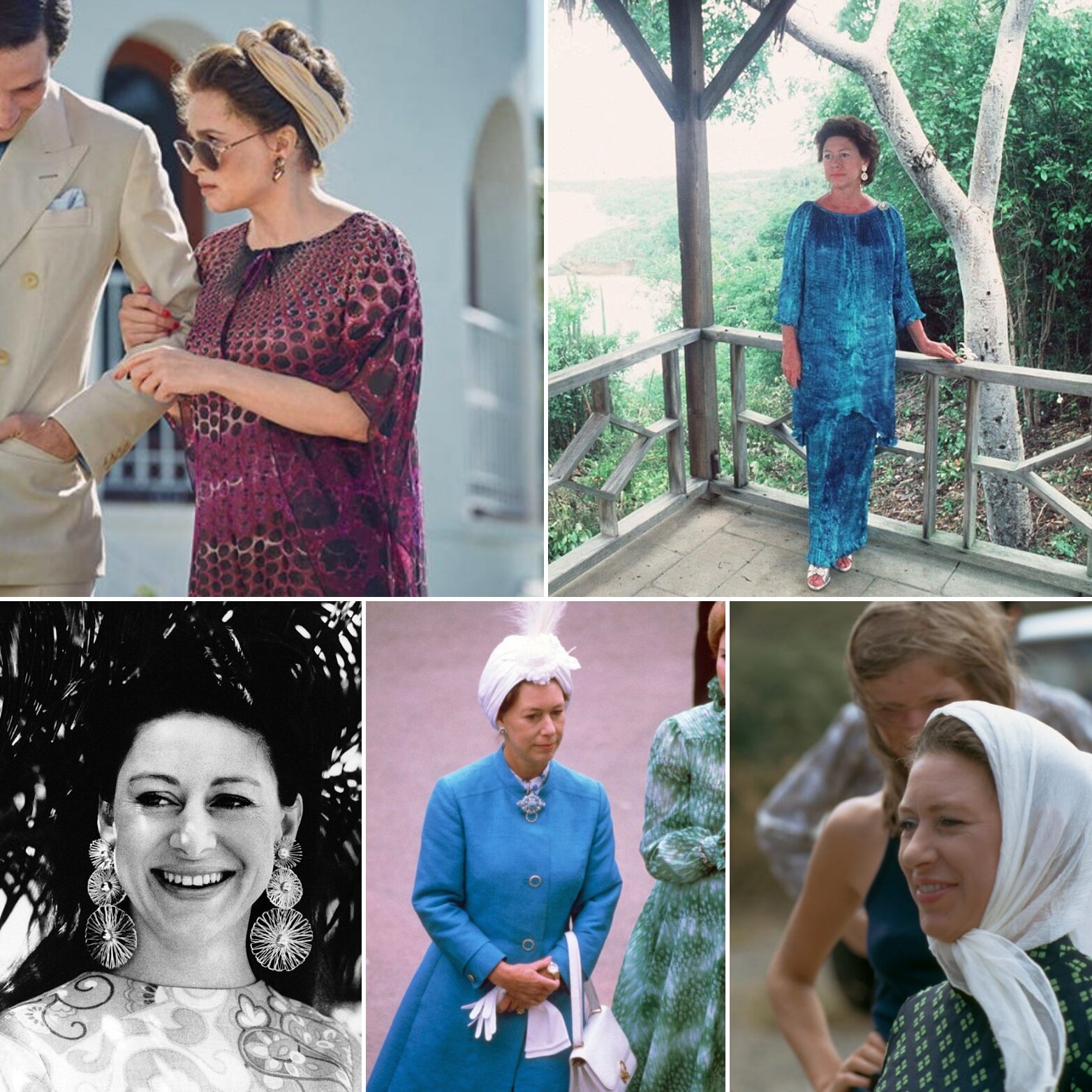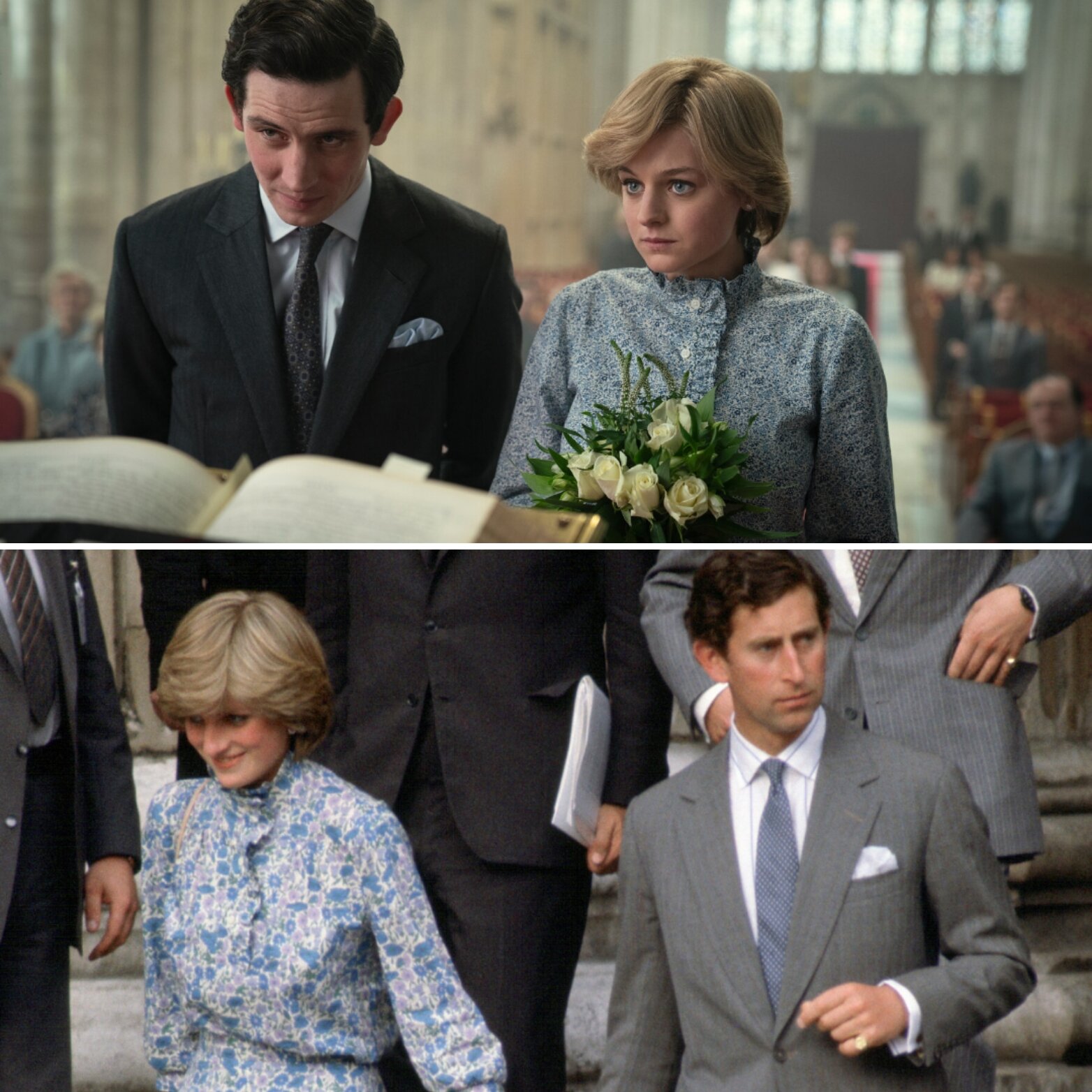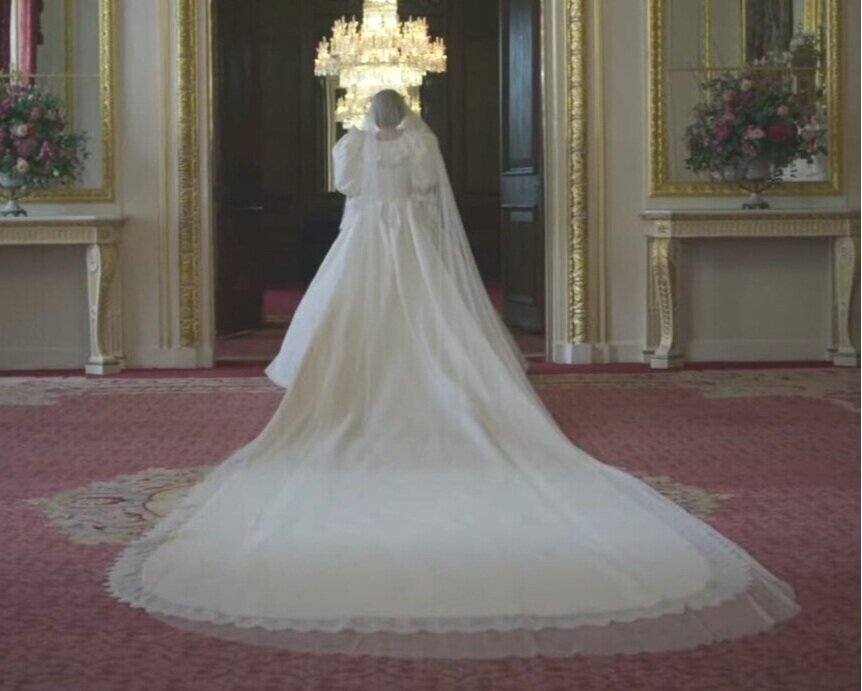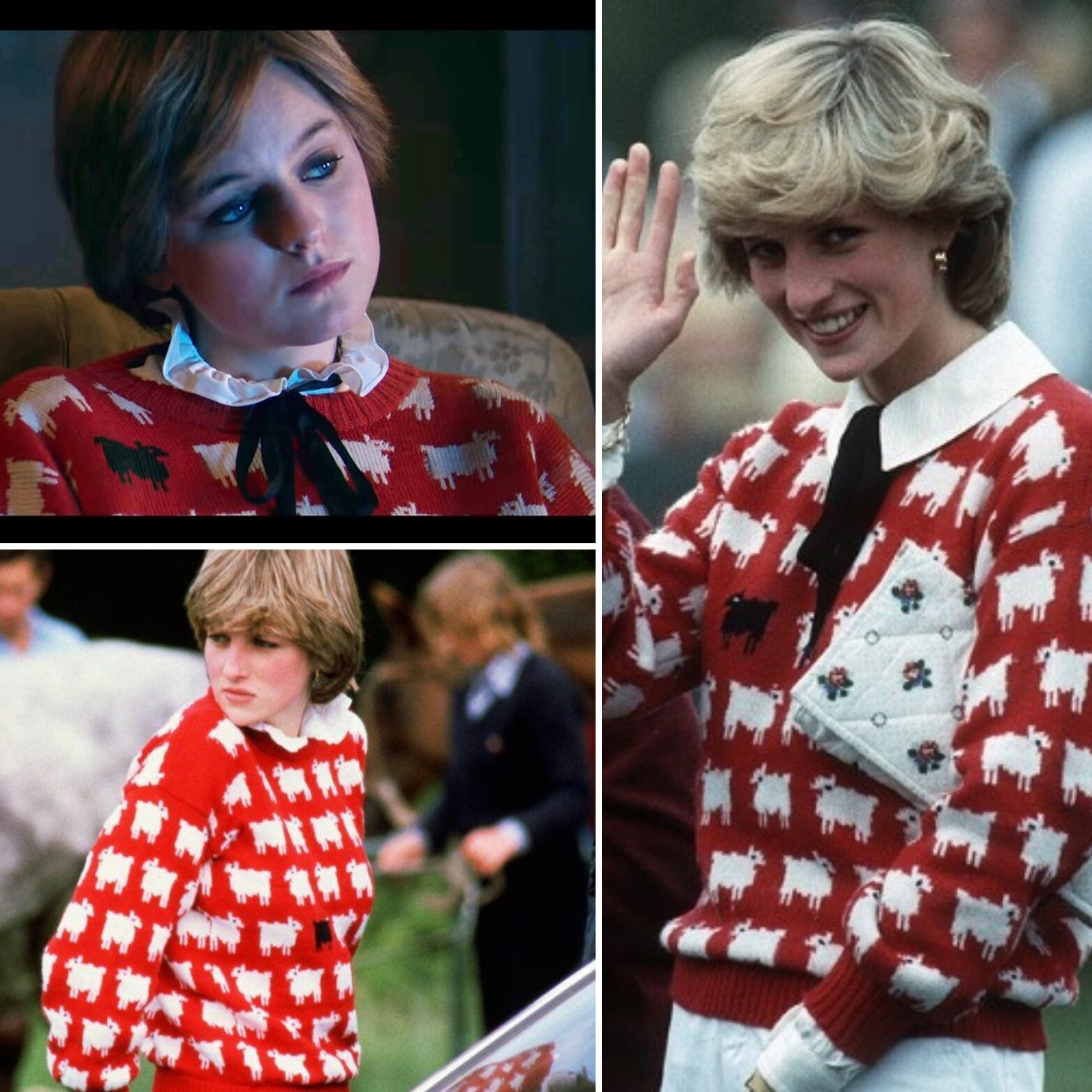Over-Analyzing The Crown: S4E9 Avalanche
All My Posts on The Crown
S3: 1 & 2: “Olding” & “Margaretology” 3: “Aberfan” 4: “Bubbikins, 5: “Coup” 6: “Tywysog Cymru” 7: “Moondust" 8: “Dangling Man” 9: “Imbroglio” 10: “Cri de Coeur”
S4: 1: “Gold Stick” 2: “The Balmoral Test” 3: “Fairytale” ( + Cinderella References) 4: “Favourites” 5: “Fagan” 6: “Terra Nullius” 7: ”The Hereditary Principle” 8: “48:1” 9: “Avalanche”
The Medals, Sashes, and Tiaras of The Crown; Tiaras/Crowns Overviews: Season 1 ; Season 2
My apologies for the delay on the blog posts about the last two episodes of Season 4 of The Crown. I’ve been taking some time off to re-evaluate things.
I have determined that if I’m going to keep blogging, I need to cut back on the level of detail and research I put into each post or I’ll just implode from stress. I mean, my last blog post on 48:1 clocked in at over 8,000 words. That’s just not sustainable. So I’m going to put CONSIDERABLE effort into really cutting down these blog posts to 3,000 words or less in the future. This is still long enough for me to get into the nitty gritty details y’all love, but will make my life, and probably your life as readers, considerably easier.
On to Avalanche!
Top: Emma Corrin as Princess Diana in The Crown and Jay Webb as Wayne Sleep.
Bottom Left: Princess Diana (Credit: Reg Wilson / Shutterstock).
Bottom Middle: Princess Diana and Wayne Sleep.
Bottom Right: Princess Diana and Wayne Sleep (Credit: Helen Wilson / Shutterstock).
The episode starts off with an incident in which Diana surprises Charles with a choreographed dance to Uptown Girl with Royal Ballet dancer Wayne Sleep. This really did happen on Dec. 23, 1985 at a private “Friends of Covent Garden” charity event. This charity event regularly featured surprise celebrity appearances, and Charles and Diana had appeared in a skit together the previous year as Romeo and Juliet. (Source: Tina Brown, The Diana Chronicles)
We unfortunately only have photos of it, and no video. Probably the closest we have to an actual video of it is this 2017 CNN film in which Sleep talks and walks through both his and Diana’s parts. I’m not a dancer at all, but from what I can tell, it seems like The Crown really tried to recreate Sleep’s description of the dance very closely.
As I’ve discussed before, Diana really did love to dance, and she had actually asked Sleep if he would give her lessons in the 1980s. He didn’t have time to teach her, but later, did agree to help her with her surprise dance. They apparently struck up quite a lovely friendship and afterward, Diana would occasionally pop in to come hang out with him in his dressing room after his performances to just chat. (Source: A 2017 interview with Wayne Sleep published in The Guardian).
This entire incident took place a month after another high profile dance of Princess Diana’s, namely, when she danced with John Travolta at the White House. At that dinner, she actually specifically asked to be seated next to Russian ballet master Mikhail Baryshnikov, and wanted to dance with him, but alas, Baryshnikov had an injured ankle at the time. (Source: Tina Brown, The Diana Chronicles)
Princess Diana with Wayne Sleep.
(Credit: Mirrorpix / Getty)
Charles’ Reaction: We can’t know whether the couple argued about it in a car afterward, but there are reports that Charles was rather cool and distant towards Diana at a reception after the event. (Source: Tina Brown, The Diana Chronicles)
Diana’s dress in the episode looks to be an almost perfect copy of the real dress Diana wore, and Emma Corrin’s hair is styled out voluminously like Diana’s was in real life. I feel like they don’t quite capture the height of Diana’s hair though.
I’m really happy they included the detail of the height difference between Diana and her partner in the crown. In real life, Diana was at least 8 inches taller than Wayne Sleep without heels; at 5’2”, Sleep is the shortest male dancer ever admitted into the Royal Ballet School. On The Crown, Emma Corrin is only 4 inches taller than Jay Webb, the actor who played Sleep (again without heels), but I think the contrast and effect still comes across very well.
Fun fact: Wayne Sleep originated the role of Mr. Mistoffelees in the initial West End run of Andrew Lloyd Webber’s Cats! (Source: Marie Claire)
Additional fun fact: Jay Webb, who played Wayne Sleep in this episode, has acted in a fictional retelling of Princess Diana’s life before! As a child, he apparently played Prince Harry in the 1996 TV movie Princess in Love, a fictional retelling of Diana’s relationship with James Hewitt. (Source: Jay Webb’s CV ). I could barely find any photos from this film online, and it has, uhm, poor ratings. I may have to go watch this and see how terrible it is. For research purposes, of course. :D
The scene in which the Queen and Philip discuss the dance after reading about it in the newspaper didn’t actually happen back in 1985. Even though there were 2,500 people in the crowd, the dance didn’t actually make the news at the time (source: Town and Country). It was 1985 and people didn’t just have cameras in their pockets like we do now. The only photos of the dance were taken by a Royal Opera House photographer, and those weren’t actually published until 1995. Sleep said in his interview with The Guardian that their publication made Diana suspicious of him and they drifted apart after that. Note: This was really hard for me to believe, but I actually searched through a couple newspaper databases for any mention to Princess Diana and Uptown Girl in 1985/1986 and couldn’t find anything.
The back and forth between the Queen and Philip of "Why did you never dance for me?” “Because if memory serves you had your own ballerinas for that.” is a callback to the Season 2 premiere episode Misadventure, when the Queen found a photo of a ballet dancer in Philip’s bag when he was about to leave on tour.
The avalanche that occurred in the show was a real life event, although it happened several years after the Uptown Girl dance. In March 1988, Diana and Charles were at Klosters with friends when an avalanche killed their long time friend Major Hugh Lindsay and seriously injured Patti Palmer-Tomkinson. Diana was back at the chalet with Fergie at the time, and said later that they waited for news for several hours in utter fear.
When the COVID-19 pandemic locked down things in the UK, The Crown only had six days of shooting left. The show had actually planned on shooting the avalanche scene during this time, and had to change course very quickly to adjust to the situation. The director of the episode said that when all their plans had to be changed, she looked at what she really needed from that scene in the story to affect the journey of Charles and Diana, and ultimately decided to show the avalanche from Charles’s perspective. The result was a completely created avalanche visual that ends up enveloping the camera’s view entirely. (Source: “The Crown Cast Tell the Story of Filming Season 4” on Youtube, around 9 minutes).
Remember the character named Sarah who we saw in the press office in the 48:1 episode immediately previous to Avalanche? That’s Major Hugh Lindsay’s wife. I thought it was an interesting choice to have us see her work so much in the margins of one episode and then see her grief take center stage in the next.
The Ethics of Dramatizing Real Life Tragedies: Sarah Horsley, Hugh Lindsay’s widow, said that she was horrified by The Crown’s inclusion of the disaster in the show and that she specifically wrote and asked them not to include it. It makes me incredibly uneasy that they didn’t listen to her on this. Yes, yes, creative freedom and all that, but …this is a real person’s life. I guess at least he wasn’t portrayed by an actor in the show (at least as far as I can tell) and the actual incident wasn’t shown beyond some very brief avalanche footage with no people present. However, this appears to be more the result of COVID-19 shutting down production and changing their plans than any attempt to portray the incident sensitively.
As the show moves closer and closer to present day, the criticism of its representation of events that are still affecting the lives of people today grows. I’m sure this will only become more of an issue in future seasons. I myself have a few questions about the ethical issues surrounding shows that come this close to present day (and my mother has some OPINIONS on this, y’all). Peter Morgan has said that he plans to maintain a “20 year rule” with the series to avoid becoming too journalistic and in order to have a bit of perspective on the events portrayed. So sorry, we’re not going to get to see Prince William or Prince Harry’s weddings in Seasons 5 or 6, nor are we going to meet Duchess Meghan. (Source: The Standard).
We /might/ get up to seeing Prince Charles’s wedding to Camilla, which occurred in 2005, but I really don’t anticipate seeing anything beyond that. Production on the fifth season starts up in June 2021, season 5 won’t premiere until probably November 2022, and season 6 won’t come out until probably November 2023 (if we’re basing predictions off the past release schedules). Including Charles and Camilla’s wedding would have to bend/break Peter Morgan’s 20-year rule slightly, but I think it would be a rather brilliant way to end the series, personally.
Tobias Menzies as Prince Philip in The Crown.
The show depicts the Queen and Philip waiting for news about the avalanche anxiously, knowing that someone has died but not knowing if it is their son or not. I’m not sure if we have any stories about their reaction to this, but this does seem to echo Diana’s accounts of the event. She and Fergie were back at the chalet and apparently heard that /someone/ had died over an hour before they actually knew who it was.
Tobias Menzies has had very little to do this season frankly, but I thought his acting in this scene was incredible. His worry for his son was just written all over his face.
The royal household does in fact have contingency plans to deal with the deaths of all royal family members. This came up in Season 1’s Act of God, when Queen Mary (Queen Elizabeth’s grandmother) mentioned that there were rehearsals for her funeral going on outside her bedroom window. These plans are given bridge-based code names, just as the Queen mentions in the episode.
Those are:
Queen Elizabeth II - Operation London Bridge
Queen Elizabeth the Queen Mother - Operation Tay Bridge (these plans were rehearsed for 22 years before her deaht, apparently)
Prince Philip, Duke of Edinburgh - Operation Forth Bridge
Charles, Prince of Wales - Operation Menai Bridge
In the show, both Charles and Diana view the avalanche as a turning point in their marriage. Charles sees it as a potential life ending event and realizes that he needs to be with Camilla. Diana sees the incident as a wake up call that she should change her ways and recommit to her marriage. I haven’t seen any evidence that either party reacted to this tragedy in these ways.
Diana said later that the tragedy taught her that she could cope with a horrible situation and take control of a situation even when Charles opposed her decision. Once they found out that Hugh had died, Diana quickly went up to pack Hugh’s suitcase and gave Fergie Hugh’s passport to give to Charles’s bodyguard. (Diana: Her True Story in her Own Words)
People have been criticizing the show a lot for making Charles look bad, but honestly, they kind of did him a favor in this story line. I’ve read in several places that Charles wanted to stay and keep skiing after Hugh Lindsay’s death but that Diana insisted that they had to fly back to the UK with Lindsay’s remains at once. (Source: The Diana Chronicles, Diana: Her True Story in her Own Words). This reaction was likely just shock though, as later, staff at Highgrove reported that Charles was completely overcome with horror and guilt and wasn’t able to eat. (The Diana Chronicles)
The Queen calls out Diana for breaking her vows, which seems pretty hypocritical since everyone knew Charles had been in love with another woman for the entirety of his marriage.
Charles is silenced yet again in the conversation with his parents and Diana and doesn’t get to speak his piece. This continues a theme with Charles’s interactions with his parents going back to Season 3 Tywysog Cymru, and continuing in Season 4’s The Balmoral Test. The Queen and Philip just want Charles to shut up and do his duty.
When the Queen talks to Anne about Charles and Diana, Anne mentions that Diana has had affairs with her bodyguard and her riding instructor. This refers to bodyguard Barry Mannakee and riding instructor James Hewitt.
Her relationship with Mannakee isn’t covered in the Crown in any depth, but Diana said in private tapes recorded by her voice coach (which were released after her death), Diana described her relationship with an unnamed bodyguard as the “greatest love” she’d ever had. Although Manakee is not mentioned by name in the tapes, the details she gives about when she met him and how he died align with his life. (Source: Oprah Daily). Manakee was also married at the time, and eventually lost his position as her bodyguard after they were caught in a “compromising position” in 1986. (Source: The Diana Chronicles). We don’t know nearly as much about Diana’s relationship with Manakee as we do about her relationship with Hewitt.
James Hewitt was Diana’s horse-riding instructor. He spoke to newspapers in the early 90s and later wrote a 1999 book called “Love and War” about his affair with Diana; she confirmed their relationship in interviews. The affair started in 1986 and ended in 1989 when he was posted to Germany.
Because Hewitt has red hair, there have been rumors for years that he’s actually Prince Harry’s dad. However, Harry was born a full two years before the affair began, so there’s really no actual grounds to believe this story. Diana always attributed Harry’s red hair to her side of the family, the Spencers. (Source: Harper’s Bazaar). The scenes in this episode about Diana sneaking Hewitt into Kensington Palace into the trunk (boot) of her car apparently are realistic. (Source: Harper’s Bazaar, Anna Pasternak’s Princess in Love)Diana’s affair with Hewitt was pretty well known among their staff and the people around them, so it seems that Anne really may have known about all of these things. In addition, while they may not have addressed their affairs with their staff quite so openly as depicted in the show, it does appear that Charles’s relationship with Camilla and Diana’s relationships were common knowledge.
As I mentioned earlier, there isn’t any sign that the avalanche actually caused Diana to change anything about her relationships, so the scenes where she kicks Hewitt out and bans him from the Palace are made up. The BBC reported that Diana stopped taking Hewitt’s calls in 1992.\\
Diana with the cast of The Phantom of the Opera in The West End. I /think/ that’s baby Andrew Lloyd Webber there too.
(Credit: UPPA / Starstock)
Princess Diana with Andrew Lloyd Webber.
The second Diana performance of the episode, in which Diana gave Charles a video of her performing a song from Phantom of the Opera, may not have happened quite the way it was depicted. The video has never been released and no one has officially ever talked about it, but back in 1988, The Washington Post reported that Diana did record something on the set of Phantom of the Opera and gave the video to Charles as a seven year anniversary gift. Wash Post also reports though that Andrew Lloyd Webber was there at the time, which he denied to The Telegraph. It’s unclear whether she actually sang in the video or not, but she definitely at least danced.
Diana really did love Phantom of the Opera and saw it numerous times. Andrew Lloyd Webber confirmed this via tweet, along with a picture of him with her.
Prince Charles has confirmed previously that his affair with Camilla began in 1986, after, in his view, his marriage had irretrievably broken down. Reports indicate that both Diana and Camilla’s husband Andrew knew about it. (Source: Insider). Of course, Andrew had already been having affairs for years and Diana also had her own relationships outside her marriage.
It’s hard to know how much Diana actually confronted Charles about the affair, but Diana did confront Camilla herself at a party in 1989. According to tapes Diana made for Andrew Morton for his book Diana: Her True Story (which were made years later and are from her own viewpoint, so there’s likely bias in this recollection), the interaction went something like this.
Diana: “I know what's going on between you and Charles and I just want you to know that.”
Camilla: “You've got everything you ever wanted. You've got all the men in the world fall in love with you and you've got two beautiful children, what more do you want?”
Diana: “I want my husband. I'm sorry I'm in the way...and it must be hell for both of you. But I do know what's going on. Don't treat me like an idiot."
Josh O’Connor as Prince Charles and Erin Doherty as Princess Anne in The Crown.
Prince Edward, Prince Charles, and Princess Anne (Credit: Tim Graham / Getty).
When Charles complains to Anne about the situation, she points out to him that Camilla and Andrew’s marriage is actually happy in its own way, stating “You’re not Romeo and Juliet.” It’s a little unclear how true this is, but reports do indicate that Andrew was aware of Camilla’s relationship with Charles, didn’t have any problems with it, and the couple remained friendly after their divorce, so it’s quite possible that this is a correct characterization.
In the show, Diana repeatedly calls Charles, but he repeatedly ignores her. I pointed out in my earlier post that the colors blue and yellow seem pretty important to their relationship. Diana seems to be wearing blue more when she’s in love with Charles and they’re connecting, but seems to wear more yellow when they’re at odds. This isn’t super consistent, but that color juxtaposition shows up a LOT in the montage of Diana calling Charles and him ignoring her; at one point, he’s in blue and completely surrounded by yellow walls, which seems to indicate the huge emotional distance between them.
Left: Emma Corrin as Diana in The Crown.
Right: Princess Diana (Credit: Princess Diana Archive / Getty).
Left: Emma Corrin as Diana in The Crown.
Right: Diana as a young teenager.
The Crown depicts Charles as having spies that watch Diana, who inform him when her affair with Hewitt resumes. It appears that Charles did have courtiers around Diana who reported back to him, at least. On a very weird note, in 1998, the UNITED STATES National Security Agency admitted that they actually had “1,056 pages of classified information about the late Princess Diana.” (Source: Washington Post, 1998). This is…bizarre to say the least, and the NSA never explained exactly why this happened, but did say that references to Diana in the intercepted conversations were incidental and that she wasn’t a formal target of the NSA eavesdropping infrastructure.

